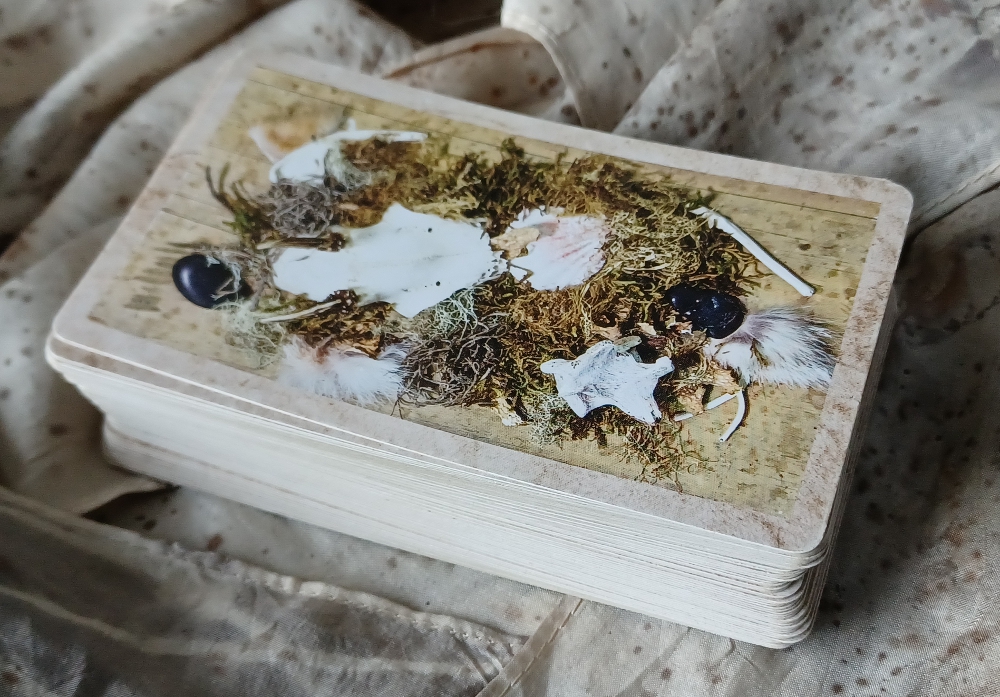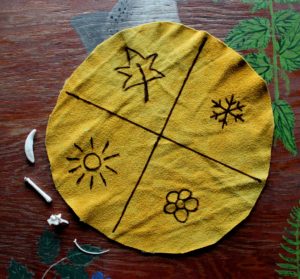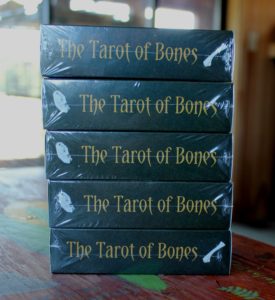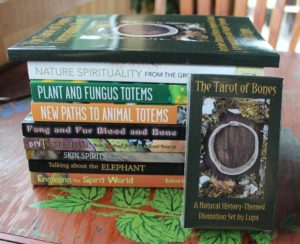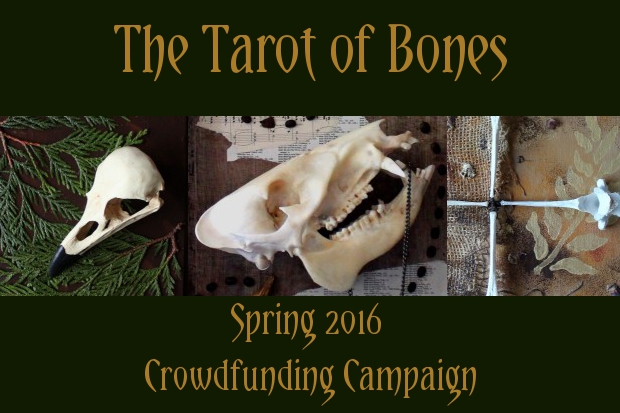I’m taking a bit of a break from working on the last few assemblages for the Tarot of Bones, and I had some thoughts regarding working non-human animals into the very anthropocentric symbolism of the tarot. See, my deck has no humans in it whatsoever; it’s all made from the bones of other species of vertebrate, and draws heavily from natural history in design and meaning. This is very different from the majority of decks out there; most are based in one way or another on the Rider-Waite Smith deck, itself derived from even older decks.
With the exception of the Seven of Wands and the Three of Swords, all of the RWS cards include a human, humanoid figure, the Moon’s human face, or in the case of the Aces a disembodied hand popping out of a cloud. Where there are non-human animals, they are largely symbolic of human interests and biases; the Knights ride horses as is appropriate, the depths of the psyche are symbolized by a crab or lobster in the Moon card, and Strength shows the taming of a lion. Even some animal-themed tarot decks are essentially the RWS in fur, feather and fin. We reign supreme, and the other animals are merely bit players in our archetypal dramas.
This is, of course, to be expected. While tarot readings for pets and other animals certainly exist, for the most part we’re pretty self-centered, wanting to know what’s going to happen with us and our fellow human beings. Unfortunately this anthropocentrism has contributed heavily to our current environmental crisis; whether through necessity, malice or apathy, we have all contributed to one degree or another to the poisoning of the land, water, sky and their inhabitants.
One of my goals as a pagan, author and artist is to help people break out of that self-centered perspective. The Tarot of Bones is one tool I’m using to that end. While I, too, have drawn on the RWS deck for inspiration, I also rely quite a bit on the behaviors and other traits of the animals whose bones I’ve worked into the assemblages for the card art. This is especially true for the Court Cards and Major Arcana, all of which utilize the skulls of species specifically chosen for each card.
But this isn’t just a “this animal means this, that animal means that” deck. I’m trying to show the parallels in our behavior. I want us to internalize the ways of other animals so that we recognize them as kin. We may not want to acknowledge our inner sloth, but my Hanged Man draws on how that animal has used its slower lifestyle to survive and thrive over thousands of years–and how we can learn to do the same. And anyone who thinks we’re the only ones who fall in love have never seen two red foxes playfully courting each other! (Okay, so we’re less likely to run around peeing on our territory in the process, but you get the idea.)
The thing is, a lot of the lessons in the tarot are universal, not just for us alone. Every male ungulate has had to fight to the top of the mountain and hold his place like the Seven of Wands, and eventually even the King of the Mountain must fall, a la the Five of Swords. There is the feasting time of the Three of Cups, and the famine of the Five of Pentacles. Some cards may seem a little too abstract for our non-human kin, like the Magician. Consider that that card’s figure relies on making use of the resources available to him at any time, though, and we quickly see how every other creature survives doing the same.
In the end, there’s really not a whole lot that we humans can claim as our own without exception. Our technological skills are just a result of tool-making instincts coupled with a ridiculously large and complicated brain; our wars are no more than territorial squabbles writ large, and our peace is the baseline sought by every creature (except, perhaps, curmudgeons like the sarcastic fringehead).
So for you tarot enthusiasts out there, the next time you break out a deck for a reading, consider how the outcome might affect a coyote, or a monarch butterfly, or a giant squid. How might you read for the other creatures of the world?
Like this:
Like Loading...
